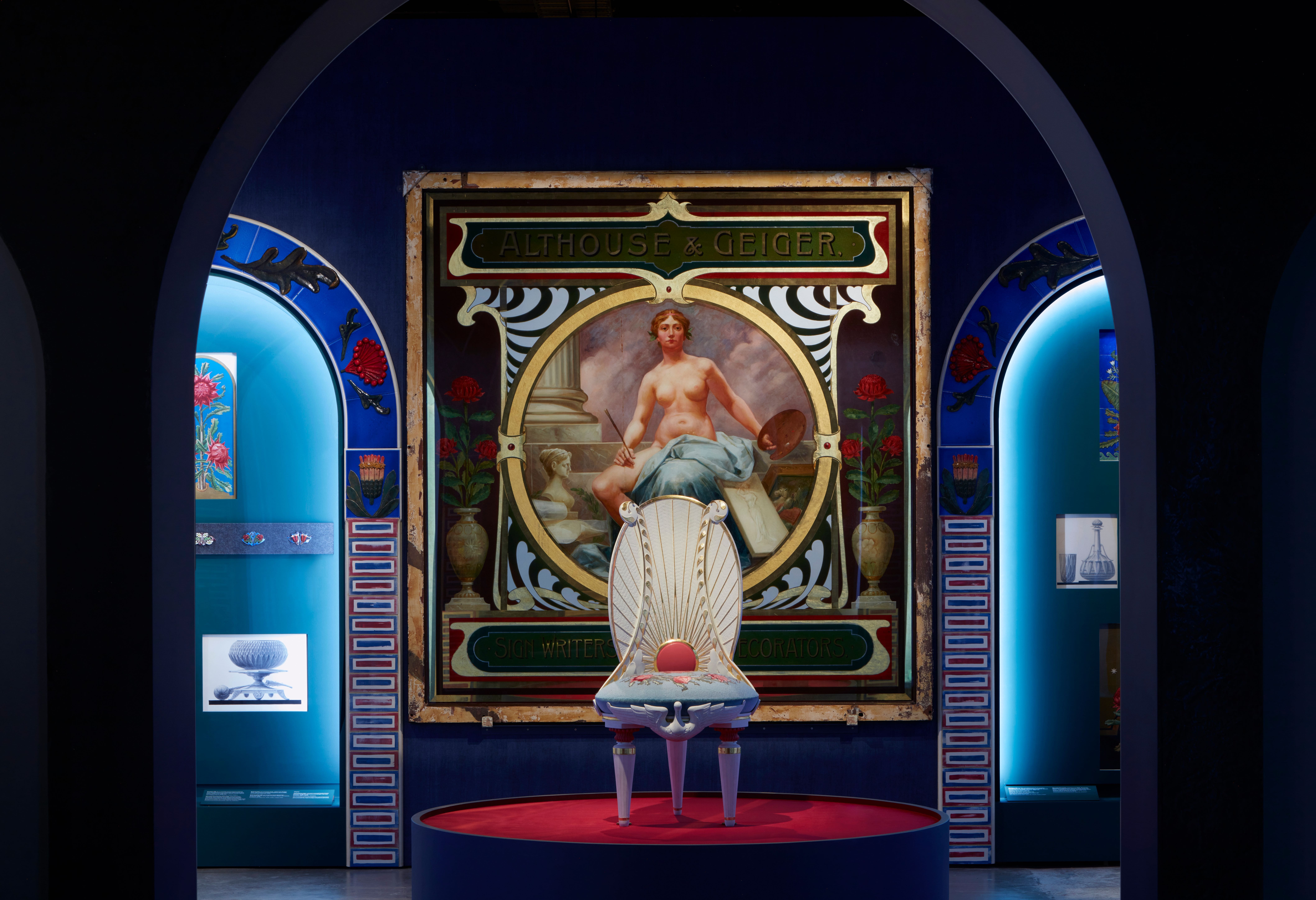Sometimes a state of overwhelm can be so gripping that you just get hit with this moment of intense clarity, like somehow these hundreds and thousands of ideas swirling around in your head like a distilled solar system all align and illuminate this one clear truth of the universe before the utter chaos of life comes crashing down again.
Walking into 1001 Remarkable Objects was like entering a state of overwhelm, getting swept away in the grandeur of the opening room with its gorgeous gowns and giant pastel walls, and then slowly taking in all of the miniscule details which pull the exhibition together. Made in collaboration with theatre professionals, the unexpectedly large showcase of the applied arts is a uniquely thrilling display of human capability, design, and desire, curated by an ethos of “remarkability” rather than a historical or cultural precedent.
In speaking with Powerhouse Chief Executive Lisa Havilah, she explains how the exhibit came together through an almost unconventional means.
“The curatorial team really approached this from identifying remarkable objects and not being too didactic about it, and I think that’s the way a lot of museums are changing, contemporary museums, is drawing strings of narrative together which you wouldn’t normally assume. I think it gives the exhibition a bit of poetry.”
You would think that a methodology like this, of choosing objects based on their “remarkability”, could lead to an almost ‘throw-it-at-the-wall-and-see-if-it-sticks’ mentality, but each of the rooms is clearly curated and designed to put forward an idea. The fun part is figuring out what that idea is.
I had some clear favourites exhibiting, including the pair of Vivenne Westwood shoes Naomi Campbell wore when she fell on the runway in the 90s, but I particularly loved a Japanese incense burner on display next to a Detroit Electric car manufactured in 1917.
The label for the burner, dated between 1920-1939, reads: “The provenance of this object is the subject of ongoing research.”
It was remarkable, not just because of the scale or intricacy of this bronze sculpture, but because it clearly meant something to the people and culture it was made for, even if we don’t know the specifics of why. It is freeing to have an exhibition admit that maybe we don’t know the full story behind why objects were made, or how they were used, or why they were admired, but that doesn’t mean we can’t appreciate the impact it had along the way.
There’s a trust in this exhibition that you’ll be able to piece together a story which isn’t necessarily laid out for you or may not have even existed before. Maybe this eclectic collection of kitschy jewellery and glamorous fashion and hand-crafted cabinets and tchotchkes says more about the human experience than a tightly designed, pedagogical collection of hyper-specific objects laying claim to a very precise part of human history. Exhibition manager Anna Garner put it best: you get to “take a bite of human history” in a choose-your-own-adventure.
Eventually, after walking through over twenty-five compartmentalised, conceptually distinct rooms, stringing and re-stringing stories and meaning between these objects that transcend time and culture and utility, it becomes a game. You get to try and figure out what time period these objects are from, whether they were intended to be spectacles or they’re just a preserved Arnott’s Osborne biscuit from 1922, and you get it right sometimes, but you also get it wrong. You get humbled into realising that people have been doing and thinking about and creating very similar things for a remarkably long time, consciously or unconsciously replicating something innate which I don’t know if we’ll ever truly comprehend.
It’s almost like, instead of trying to say something specific, the exhibit merely says that humans have been doing interesting and compassionate things for the sake of it for hundreds of years, and letting go is the best way to understand that.
It’s also a lot of fun.
1001 Remarkable Objects is on exhibition at the Powerhouse Ultimo from the 26th of August to December 2023. Entry is free.





